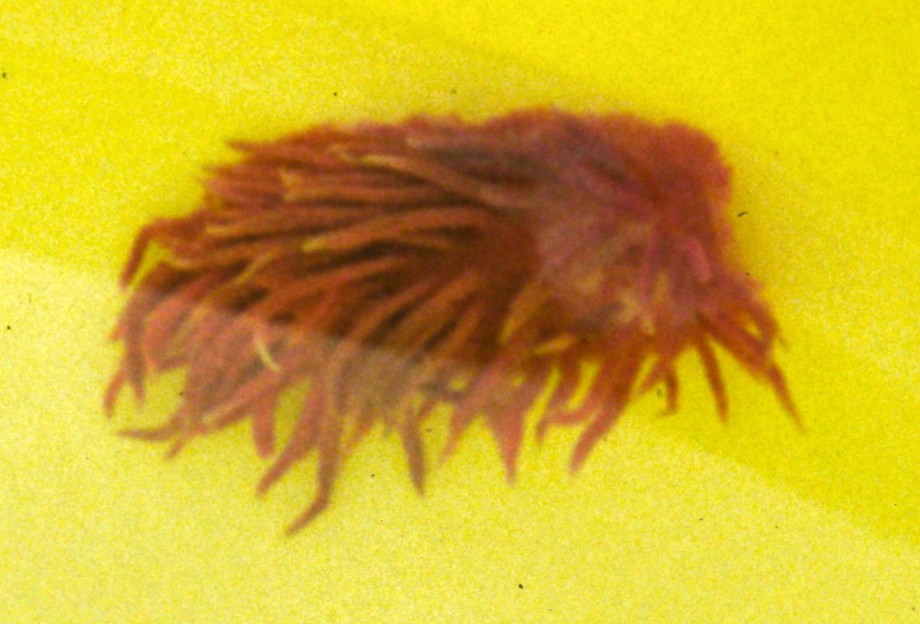Okenia rosacea (Macfarland, 1905)Common name(s): Hopkin's rose nudibranch |
|
| Synonyms: Hopkinsia rosacea |  |
| Phylum Mollusca
Class Gastropoda Subclass Opisthobranchia Order Nudibranchia Suborder Doridacea Family Goniodorididae |
|
| (Okenia rosacea, San Simeon, CA. Approx. 1 cm long. | |
| (Photo by: Dave Cowles, May 1999) | |
How to Distinguish from Similar Species: No other dorid is rose pink and has cerata-like outgrowths of the dorsum. Triopha catalinae and Limacia cockerelli have orange projections but have a white dorsum.
Geographical Range: Coos Bay, OR to Puerto Santo Tomas, Baja California. Especially common near Monterey Bay
Depth Range: Low intertidal to 6 m
Habitat:_Rocky intertidal, especially in lower midlittoral tidepools, mostly on open coast.
Biology/Natural History:
Feeds on the bryozoan
Eurystomella bilabiata, which is also a rosy color.
Lays
eggs in a narrow rose-colored ribbon spiraled
counterclockwise. The
nudibranch Navanax inermis eats this
species. There are no
digestive
diverticula in the cerata-like
growths. Named after Timothy Hopkins, a railroad executive
who helped
establish Hopkins Marine Station.
| Return to: | |||
| Main Page | Alphabetic Index | Systematic Index | Glossary |
References:
Dichotomous Keys:Kozloff 1987, 1996
General References:
Behrens,
1991
Behrens
and Hermosillo, 2005
Harbo,
2011
Kozloff,
1993
Morris
et al., 1980
Niesen,
1994
Scientific Articles:
General Notes and Observations: Locations, abundances, unusual behaviors:

A photo taken at Moss Beach, Laguna del Mar, CA by Dave Cowles, April
1993
Authors and Editors of Page:
Dave Cowles (2005): Created original page